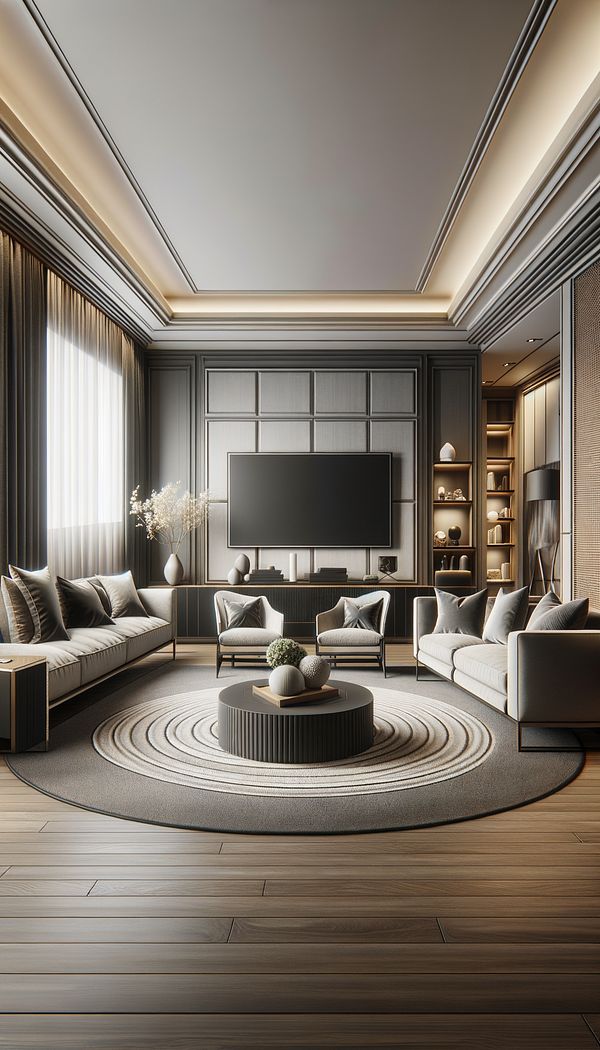What is Alignment?
Alignment in interior design refers to the arrangement of elements in a way that creates a line or row, forming a visual connection.
Description
Alignment is a fundamental principle in interior design that involves positioning elements in a manner that creates a visual line or arrangement, thereby establishing an orderly and cohesive look. It's about organizing components in a space so that they seem to be in sync, whether they are in a straight line, aligned centrally, or positioned according to another axis. Proper alignment not only adds to the aesthetic appeal of a space but also enhances its functionality by guiding the viewer’s eye through the design and creating a sense of balance and unity.
By aligning furniture, artwork, and other decorative objects, you can create a harmony that feels both intentional and inviting. It’s an essential tool for designers looking to craft spaces that are both beautiful and navigable. Whether you're aligning a series of paintings on a wall or positioning a sofa directly across from a television, the principle of alignment ensures that these elements relate to each other in a meaningful way.
Usage
For instance, in a living room setting, a designer may align the sofa with the coffee table and television to create a clear focal point and flow. In a gallery wall arrangement, artworks are aligned either by their tops, bottoms, or centers, creating a cohesive visual story. In an office space, desks and chairs may be aligned to maximize the efficiency of movement and interaction among employees.
FAQs
-
How does alignment affect the perception of space?
Alignment affects the perception of space by creating order and harmony, making a room feel more organized and visually appealing. It can also guide the eye through the room, impacting how large or intimate a space feels.
-
Can alignment apply to colors and patterns?
Yes, alignment can also apply to colors and patterns, where the repeating elements or motifs in wallpapers, textiles, or artworks are arranged to create a cohesive visual rhythm.
-
What's the difference between alignment and balance?
While both alignment and balance create harmony within a space, alignment focuses on the arrangement of elements along a specific line or axis, whereas balance concerns the distribution of visual weight across the design.
Practical Application
When applying alignment in your space, start by identifying key focal points and aligning objects or furniture along those lines. Consider both horizontal and vertical alignment for different elements. For instance, aligning a lamp with a side table next to a bed not only creates a cohesive look but also serves a functional purpose. Use alignment to guide movement through space and to highlight areas of interest or importance.
-
Decorative Objects240 articles
-
Window Treatments65 articles
-
Space Planning & Layout134 articles
-
Decorating Principles & Elements330 articles
-
Wall Treatments & Finishes157 articles
-
WhitewashingWhitewashing is a painting technique that uses diluted paint to create a translucent finish.
-
Slant-Front DeskA slant-front desk is a type of writing desk with a hinged writing surface that slopes downwards when opened.
-
Dust RuffleA dust ruffle is a decorative piece of fabric designed to cover the lower portion of a bed frame and the area underneath.
-
GeorgianGeorgian architecture and interiors denote the styles that were popular in Britain during the reigns of the first four Georges, from 1714 to 1830.
-
BlanketA large, rectangular piece of soft fabric, often used for warmth while sleeping or resting.
